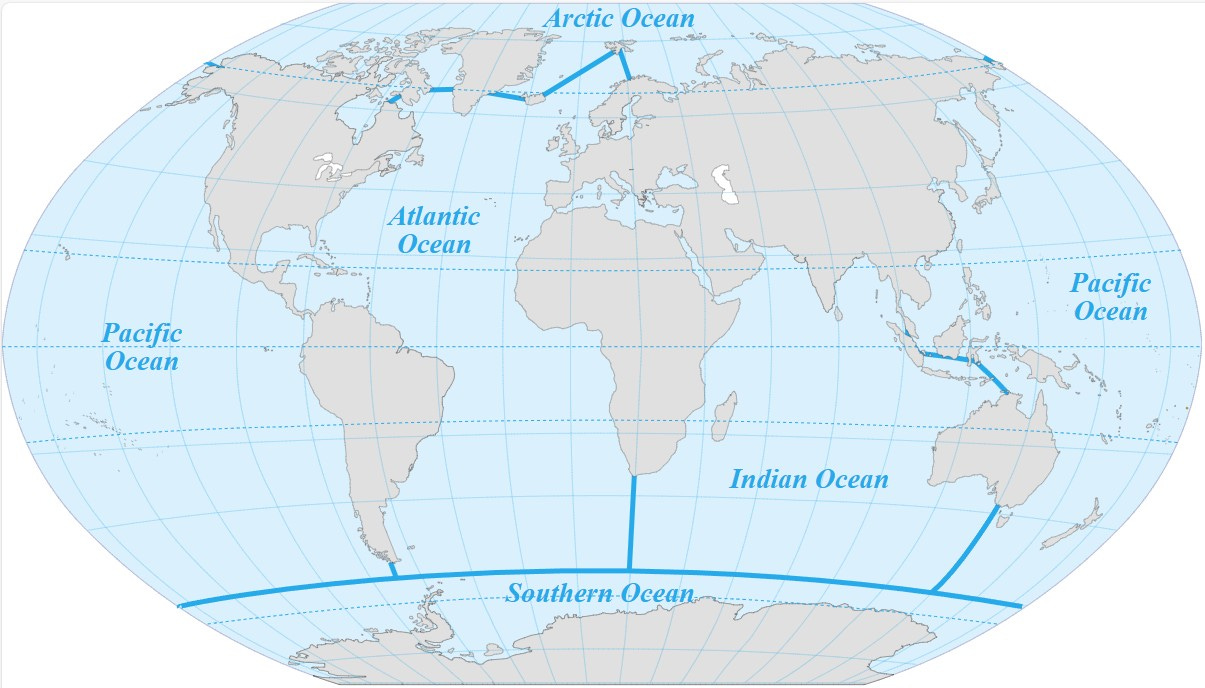Thanks to Samuel Taylor Coleridge for the title/subtitle. We know far more about oceans than they did in the day of The Rime of the Ancient Mariner, but, as with all knowledge, we also realize how much more there is to learn. In this post we’ll just barely scratch (dip?) the surface.
First, some basics, just so we remember how MUCH ocean water there is on earth. The ocean covers 70.8% of the earth. I typed THE ocean, because there really is just ONE ocean. We just call certain areas of the ocean certain names for geographic, historical and political reasons.
The contemporary concept of the World Ocean was coined in the early 20th century by the Russian oceanographer Yuly Shokalsky to refer to the continuous ocean that covers and encircles most of Earth. The global, interconnected body of salt water is sometimes referred to as the World Ocean, global ocean or the great ocean. The concept of a continuous body of water with relatively unrestricted exchange between its components is critical in oceanography. (Wikipedia)
The ocean is roughly 35% salt and contains 97% of the earth’s water. Here’s how it breaks down:
One thing I get from the chart above is how precious our fresh water really is!
Five Ocean Areas
In common speech, we talk about the ocean having five differently named areas: Pacific, Atlantic, Indian, Antarctic/Southern, and Arctic. Here are some maps, so you can picture it.
Trench Deep, Mountain High
Before we go, I want to mention a few amazing facts about what is BELOW the ocean.
The oceans fill what are called the ocean basins. Every ocean basin has a mid-ocean ridge, which creates a long mountain range beneath the ocean. They run one into the next to create the longest mountain range in the world. We’re talking 40,000 miles long (65,000 km). This deep-sea range is several times longer than the longest mountain range on land – the Andes.
The largest mountain under the ocean is Mauna Kea, located off the coast of Hawaii in the Pacific Ocean. It is approximately 33,500 feet from its base on the ocean floor to its summit, which makes it larger than Mount Everest, which is about 29,032 feet from base to summit.
The deepest ocean trench in the world is the Mariana Trench, located in the western Pacific Ocean. The deepest part is called the Challenger Deep, which reaches a depth of about 36,070 feet, or nearly 7 miles below sea level. Whew!
So many interesting facts and so little time and space! Sometime in the future I’ll post a Daily Hmm about each of the five ocean areas individually. In the meantime, you can always search on your own. Be an ocean explorer!
Remember, you can get new posts in your inbox simply by subscribing. Join the cool!









